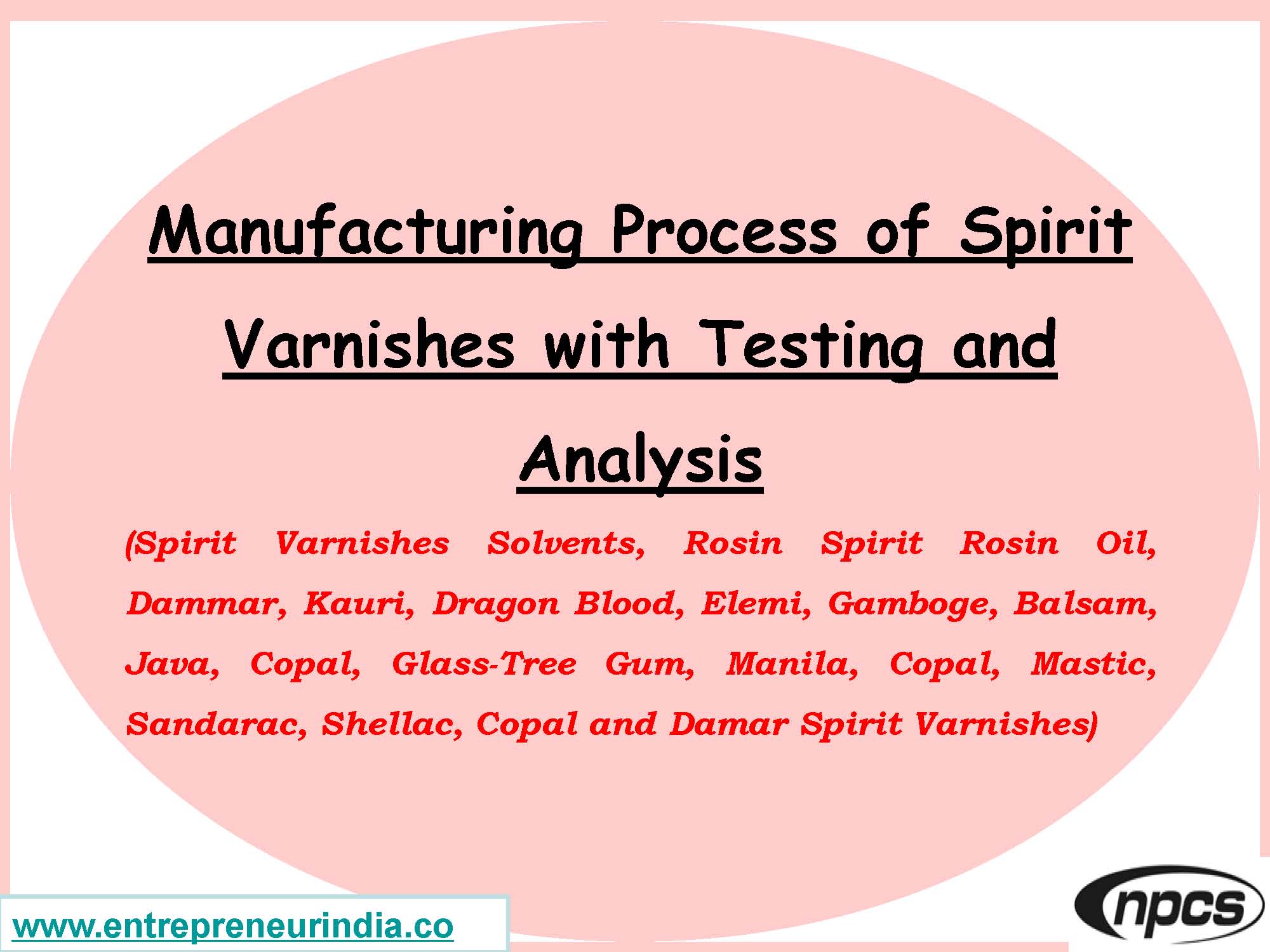
Spirit varnish is a widely used clear finish known for its quick-drying properties and high gloss. It is primarily used in wood finishing, musical instruments, antique restoration, and fine furniture. The key to its performance lies in the balance between solvent choice and resin quality. Therefore, understanding the Spirit Varnish Manufacturing process is essential for businesses looking to produce high-quality coatings. Moreover, with growing interest in traditional and fast-drying finishes, this niche segment offers strong potential for small and medium-scale manufacturers aiming for a specialized market.
Spirit Varnish Manufacturing | Solvents & Resin Guide
Spirit varnish is a solution of natural or synthetic resins dissolved in a volatile solvent like alcohol. Once applied, the solvent evaporates quickly, leaving behind a thin, glossy, protective film. This quick-drying feature makes spirit varnish ideal for time-sensitive or precision applications, especially on wood and artistic surfaces. Below, we explore the solvents, resins, formulations, and production steps involved in Spirit Varnish Manufacturing.
See Also : Beverage & Food
Common Solvents Used in Spirit Varnish
The most widely used solvent in Spirit Varnish Manufacturing is alcohol. It ensures rapid evaporation and does not raise wood grain, making it ideal for fine finishes. Key solvents include:
-
Denatured Alcohol – Most common for dissolving shellac
-
Methanol or Ethanol – Used in special formulations
-
Isopropyl Alcohol – Offers moderate drying and less odor
-
N-Butanol – Sometimes used as a co-solvent to slow drying
Moreover, solvent quality affects clarity, drying time, and finish smoothness. Using high-purity alcohol ensures a bubble-free, even coat.
Types of Resins for Spirit Varnish
Resins provide the gloss, adhesion, and protective qualities of spirit varnish. Common resins include:
-
Shellac – The most traditional resin used in spirit varnish
-
Mastic Resin – Soft, flexible, suitable for musical instruments
-
Copal – Offers a harder and glossier finish
-
Damar Resin – Used for artworks and delicate woodwork
-
Synthetic Resins – Added for cost-efficiency and specific properties
Moreover, combining resins can help achieve desired hardness, drying time, and transparency.
Manufacturing Process
Spirit Varnish Manufacturing follows a simple blending process under controlled conditions:
-
Weighing the Resins: Measure resin quantity as per desired formulation.
-
Dissolving: Slowly add the resin into the solvent under stirring.
-
Mixing: Continuous mixing ensures full dissolution and clarity.
-
Filtering: Use fine mesh or filter paper to remove undissolved particles.
-
Packing: Store in airtight containers to prevent solvent loss and contamination.
Moreover, temperature control (usually room temperature) is important to avoid solvent evaporation during production.
Key Characteristics of Spirit Varnish
A well-manufactured spirit varnish offers:
-
High gloss finish
-
Fast drying (within minutes)
-
Easy recoating
-
Non-yellowing properties
-
High adhesion to wood and porous surfaces
-
Low viscosity and smooth brushability
Moreover, spirit varnish can be used on wood, bamboo, cork, and even as a topcoat over pigments or gold leaf.
Applications and Use Cases
Spirit Varnish Manufacturing serves several markets:
-
Furniture & Antique Restoration – Enhances natural grain and preserves wood
-
Musical Instruments – Used on violins and pianos for tone protection
-
Artwork Finishing – Artists use it to seal and protect paintings
-
Crafts and Handicrafts – Ideal for wood toys, jewelry boxes, and décor items
-
Religious Items – Used in temples and wooden sculptures
Moreover, the light, glossy coat gives an authentic, natural appearance unlike polyurethane or plastic-like finishes.
Quality & Safety Considerations
To maintain consistency and safety in Spirit Varnish Manufacturing, follow these practices:
-
Use sealed mixing equipment to reduce solvent fumes
-
Ensure proper ventilation in the production area
-
Wear gloves and protective gear to handle alcohol and resins
-
Test each batch for drying time, film clarity, and shelf life
-
Comply with fire safety norms due to flammable solvents
Moreover, store raw materials and finished products away from heat sources and sunlight.
Read More :Agriculture & Food
Conclusion
Spirit Varnish Manufacturing offers an excellent opportunity for small-scale entrepreneurs and artisans focused on quality finishes. With simple processing steps, low machinery needs, and a growing niche market, it remains a profitable and sustainable product line. Moreover, customizing varnish for specific industries like musical instruments or fine furniture adds value and competitive edge. By selecting high-grade resins and solvents, and maintaining quality control, businesses can carve a reliable space in the specialty coatings market.





